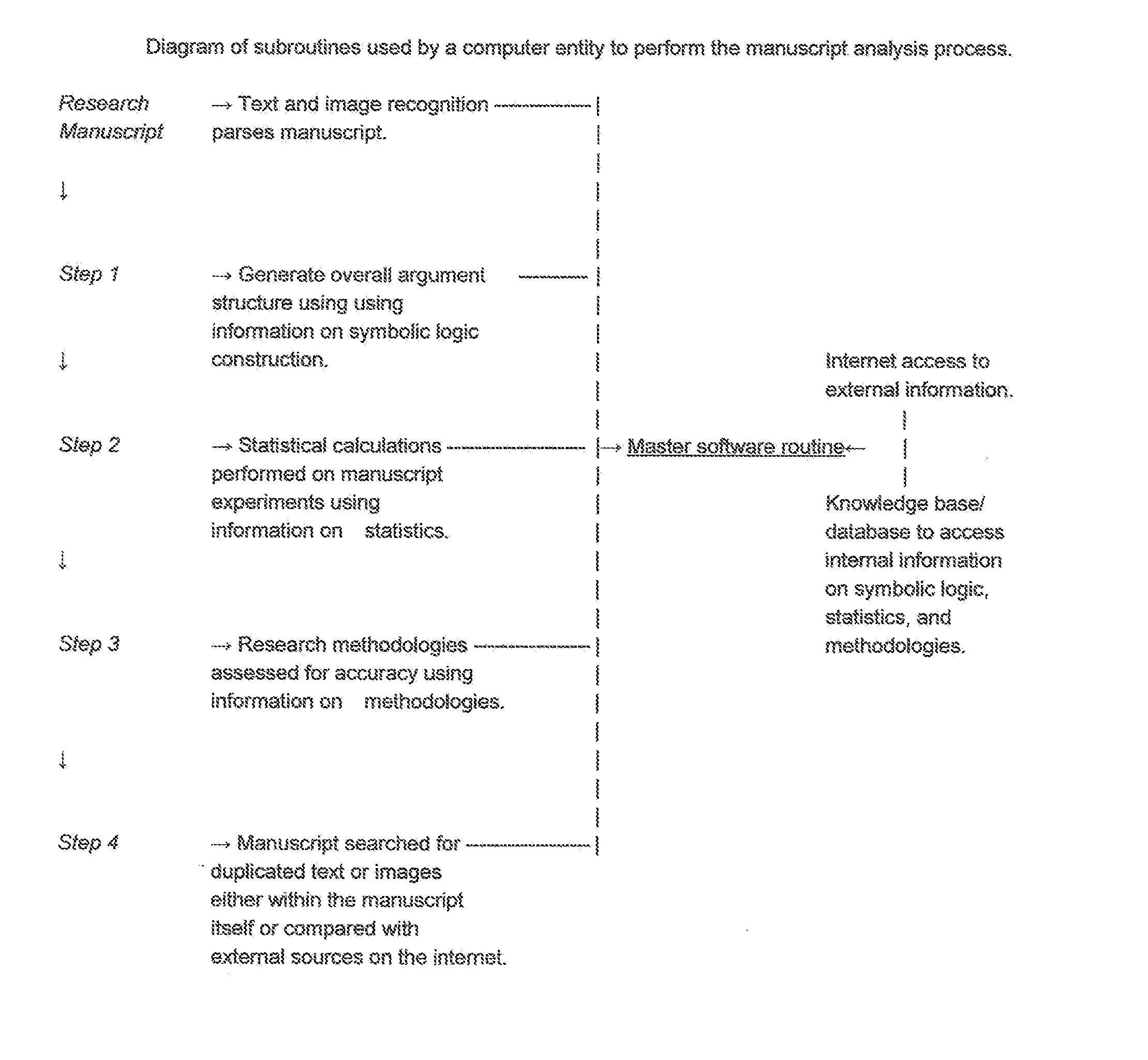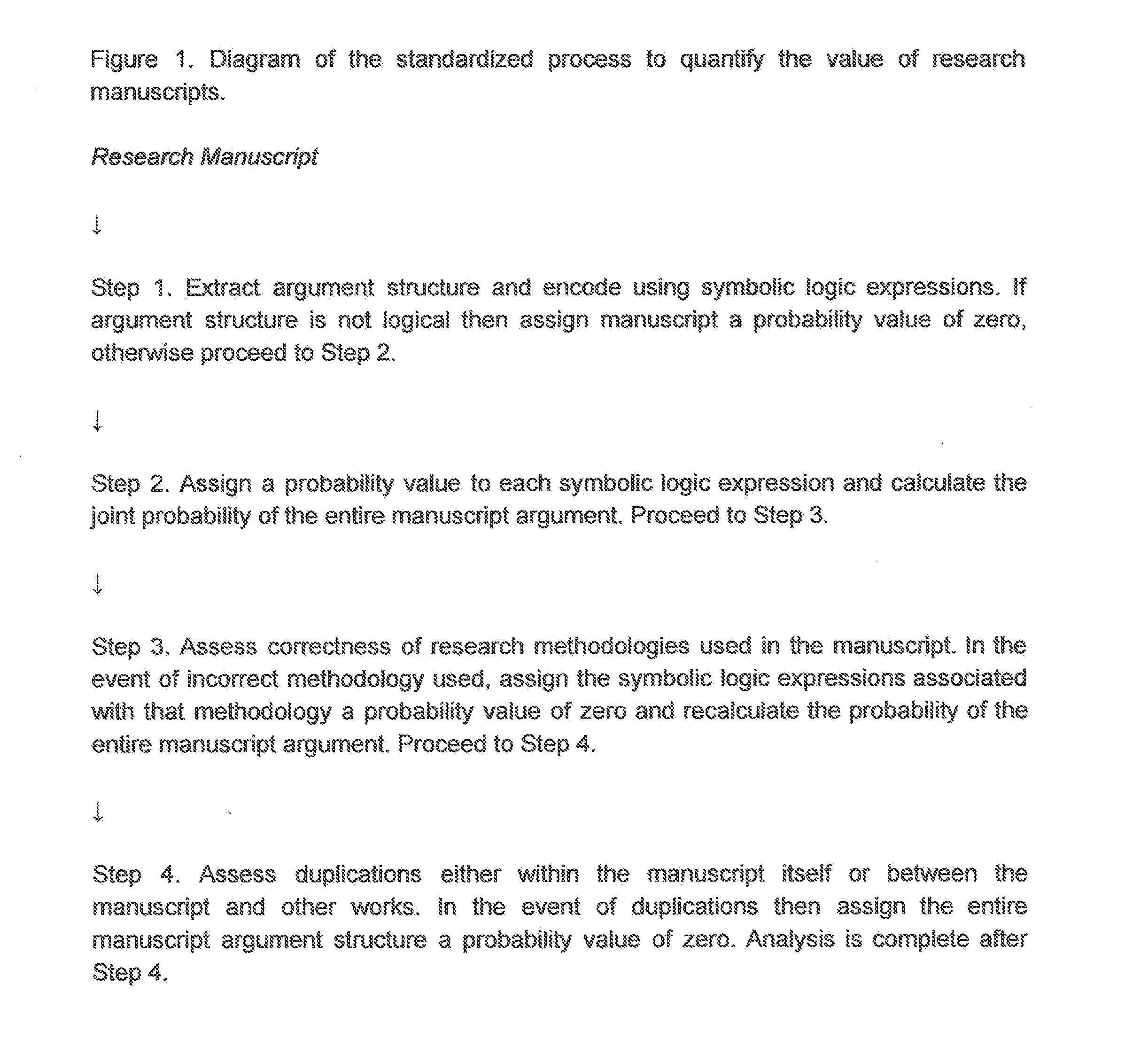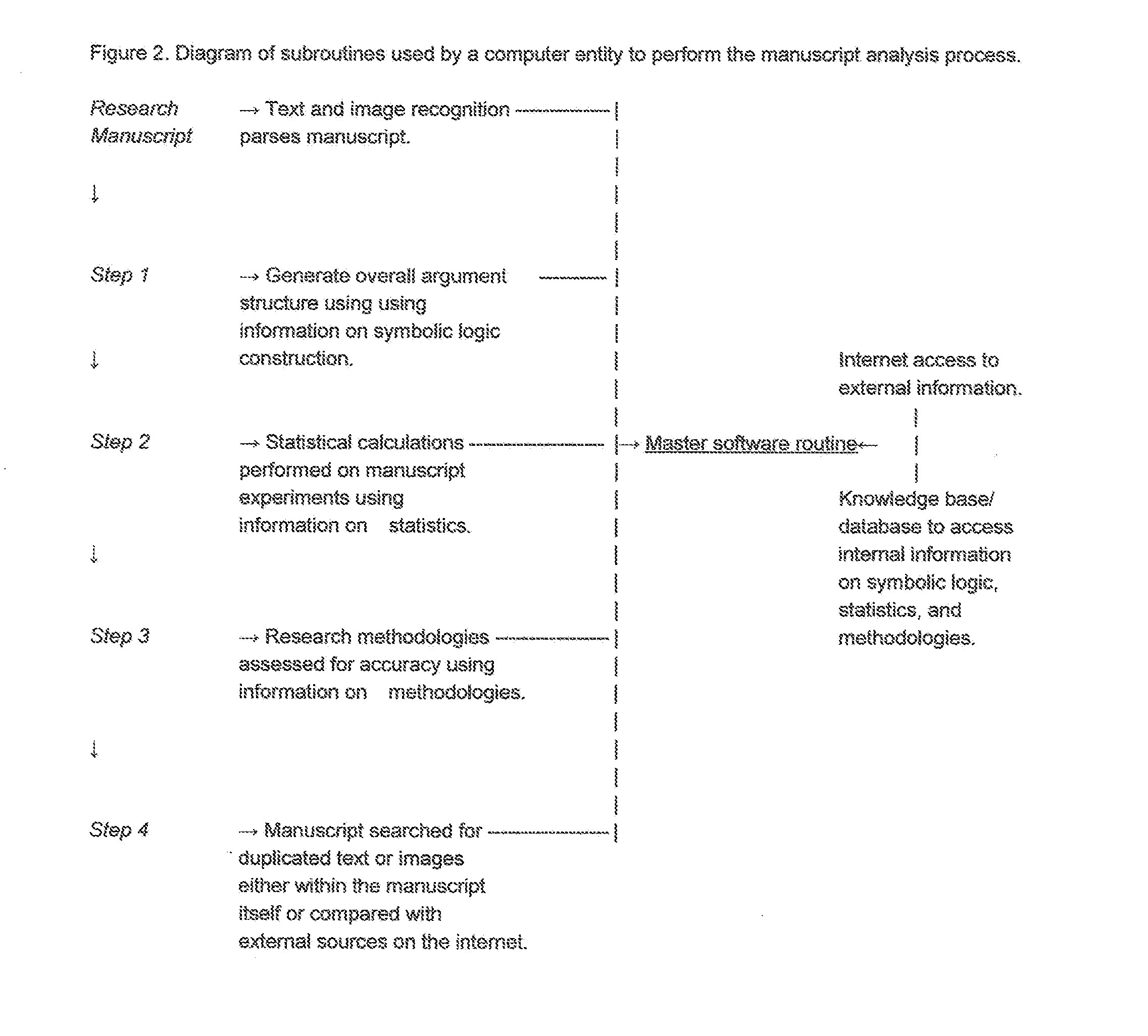Standardized process to quantify the value of research manuscripts
a technology of research manuscripts and process, applied in the field of standardized process to quantify the value of research manuscripts, can solve the problems of lack of data reproducibility and validity, and not being able to determine whether or not a research manuscript is valid or no
- Summary
- Abstract
- Description
- Claims
- Application Information
AI Technical Summary
Benefits of technology
Problems solved by technology
Method used
Image
Examples
Embodiment Construction
[0020]The invention is for a standardized process to quantify the value of published research manuscripts. The process consists of 4 distinct steps, depicted in FIG. 1.
[0021](Step 1) First, the overall argument structure of the paper is encoded into a language of symbolic logic, with one or more statements for each experiment in the manuscript. Typically, a research manuscript contains experiments that can be encoded into two types of logic statements: either a simple proposition statement, or an if-then statement. A simple proposition statement would be made in the case of an experiment that simply collects data about a particular system, such as measuring blood pressure; e.g., if A=blood pressure is 120 mmHg, then the propositional statement is simply “A.” An if-then statement would be the result of an experiment that collects data about a system upon perturbation, such as measuring blood pressure after administering a drug; e.g., if B=drug X is administered, and A=blood pressure ...
PUM
 Login to View More
Login to View More Abstract
Description
Claims
Application Information
 Login to View More
Login to View More - R&D
- Intellectual Property
- Life Sciences
- Materials
- Tech Scout
- Unparalleled Data Quality
- Higher Quality Content
- 60% Fewer Hallucinations
Browse by: Latest US Patents, China's latest patents, Technical Efficacy Thesaurus, Application Domain, Technology Topic, Popular Technical Reports.
© 2025 PatSnap. All rights reserved.Legal|Privacy policy|Modern Slavery Act Transparency Statement|Sitemap|About US| Contact US: help@patsnap.com



